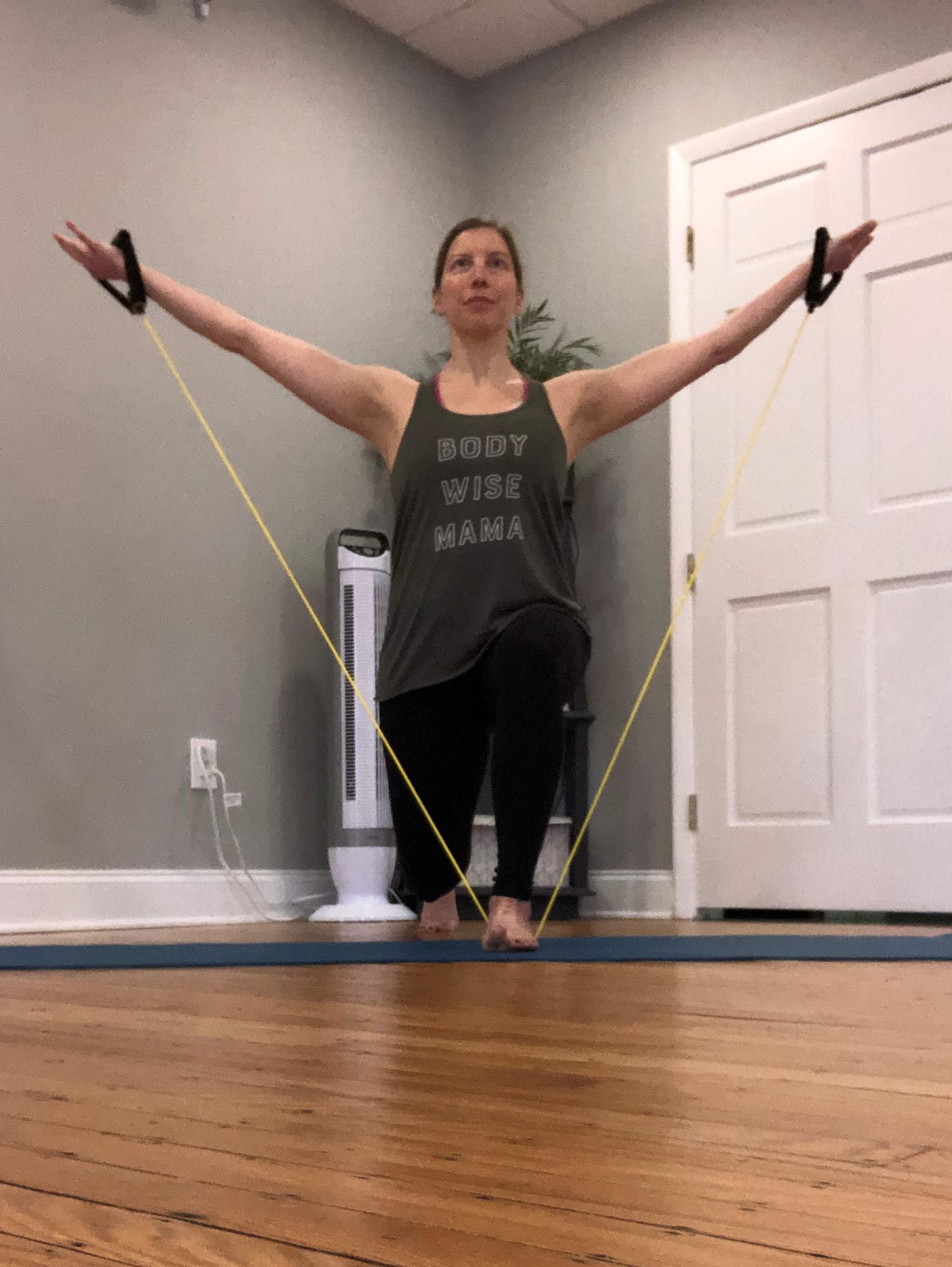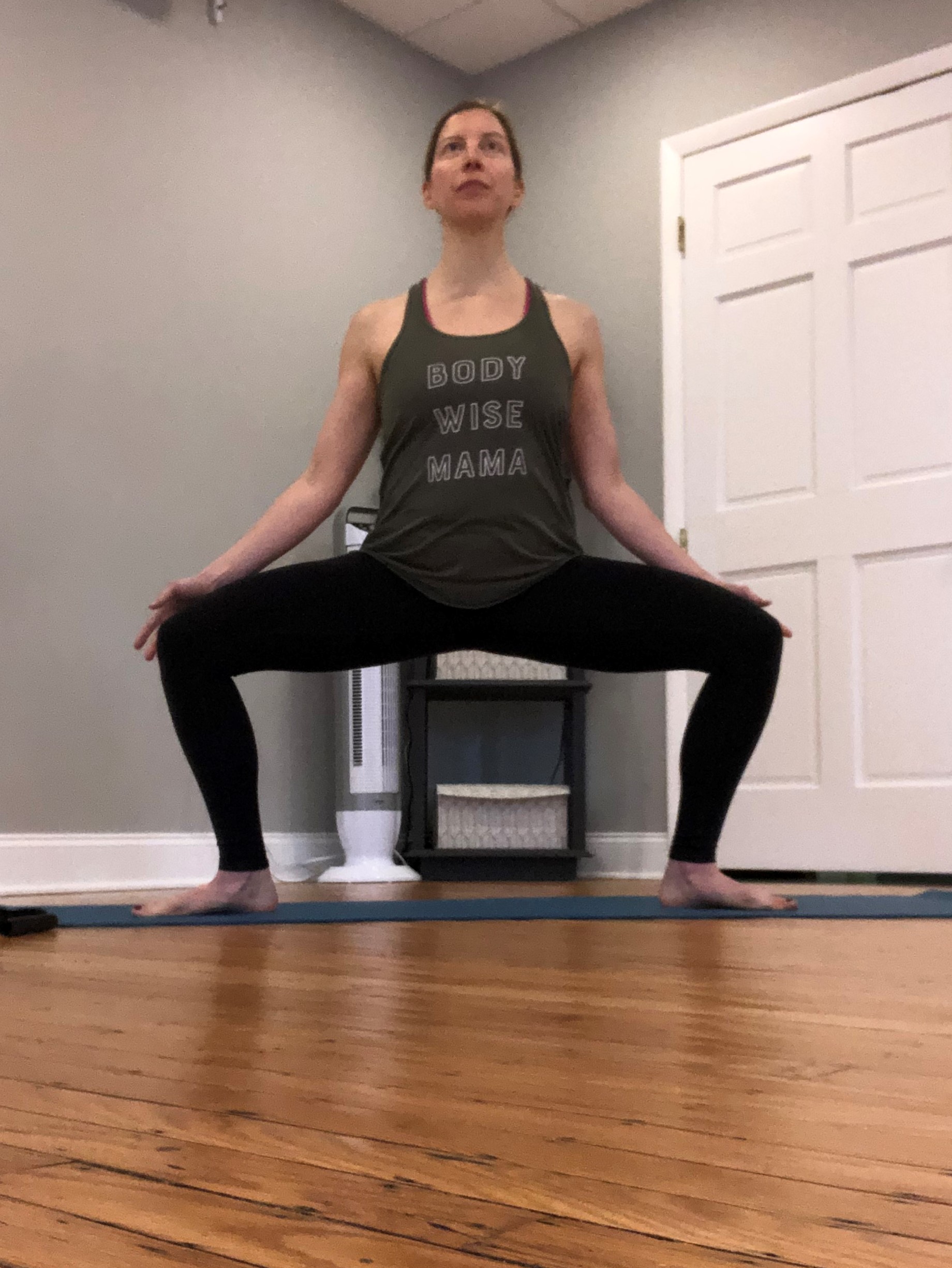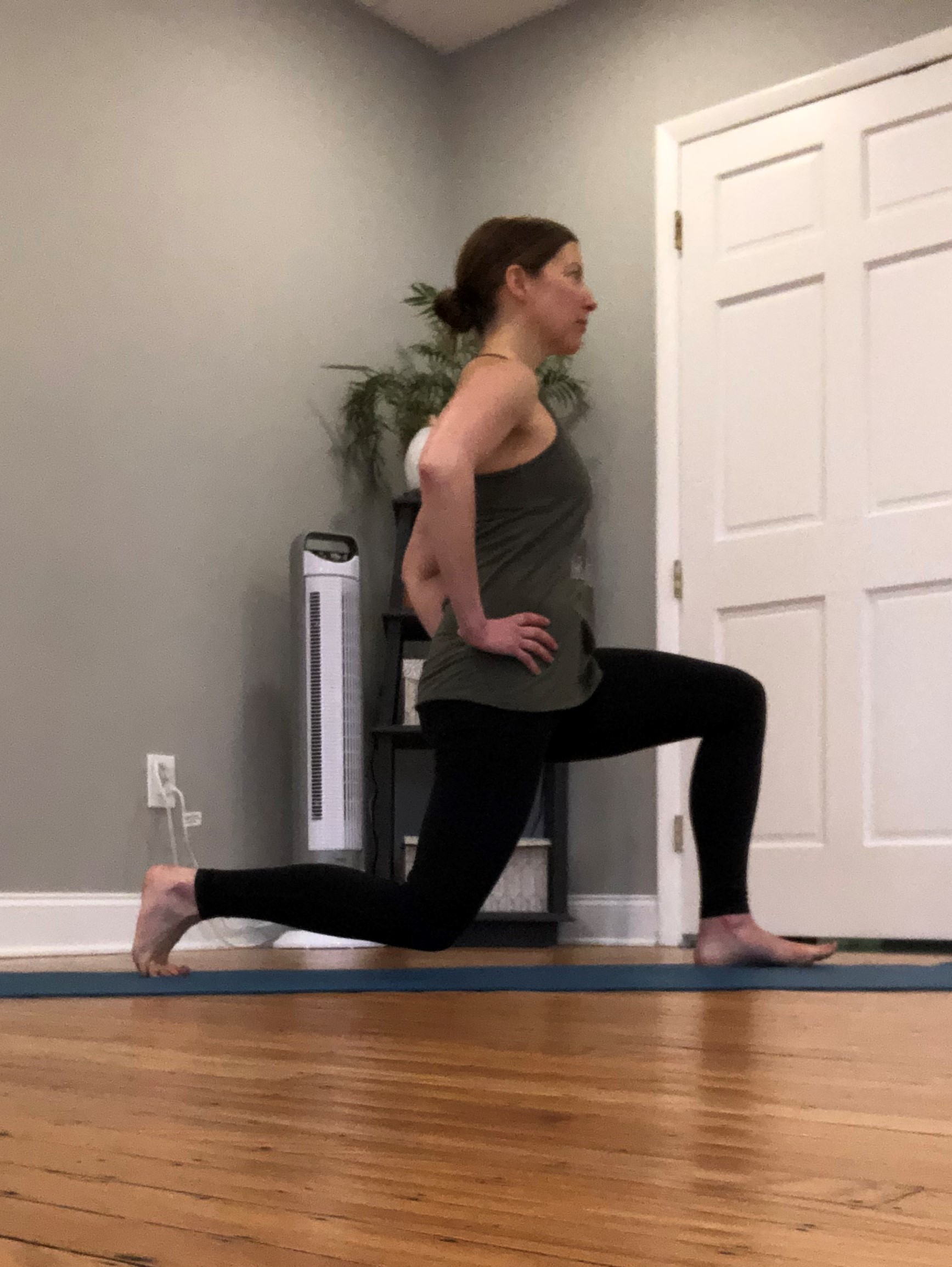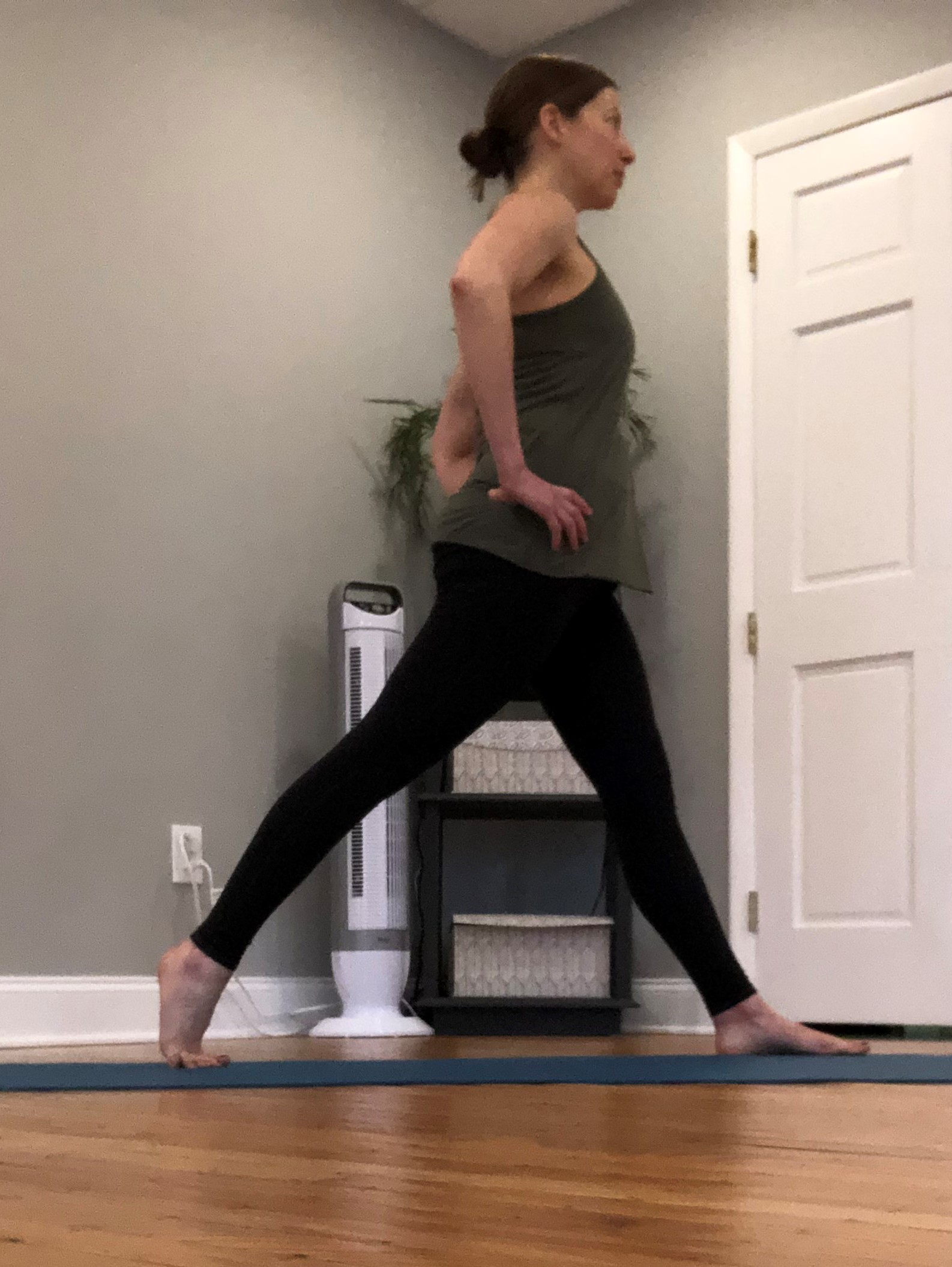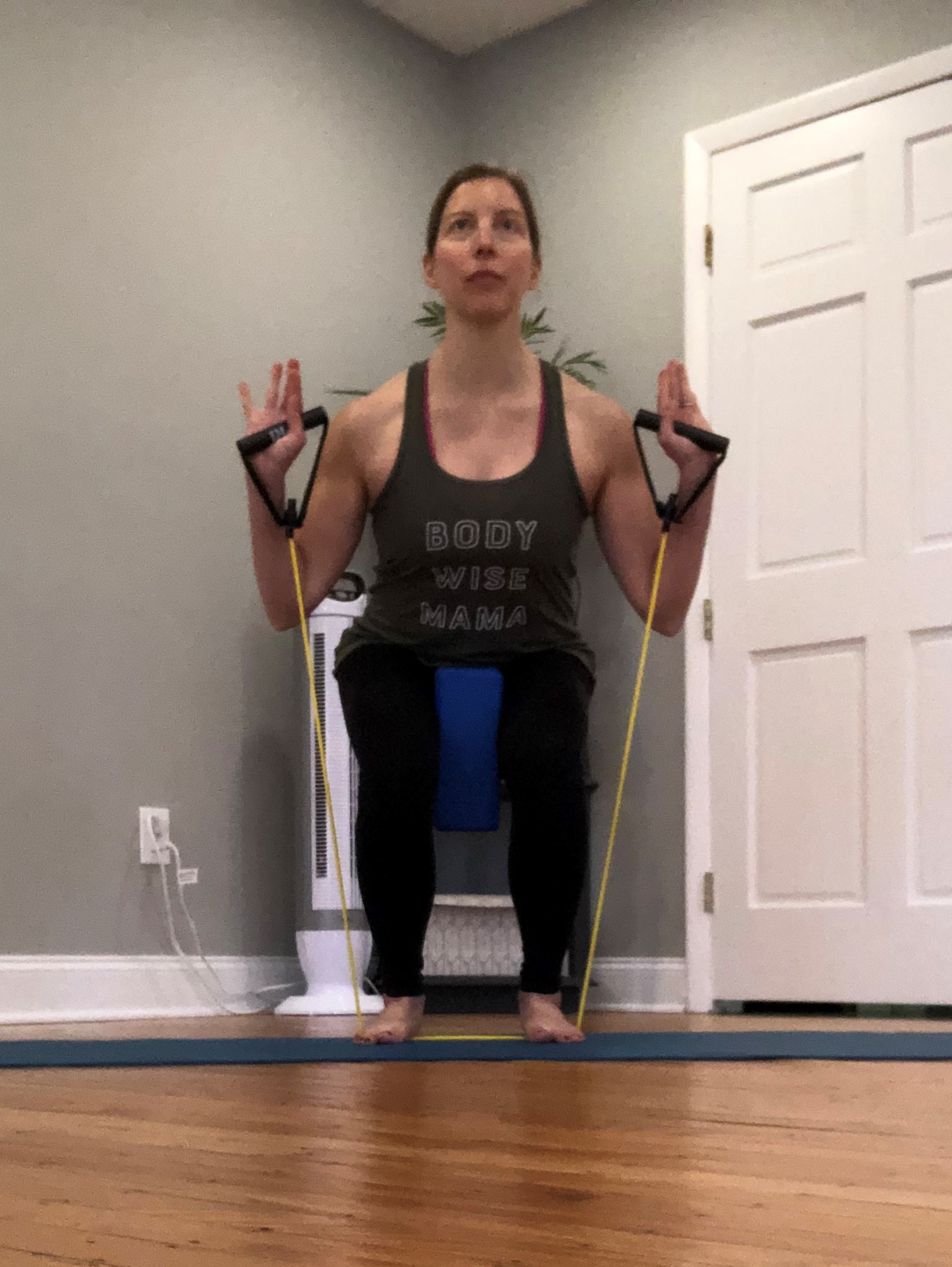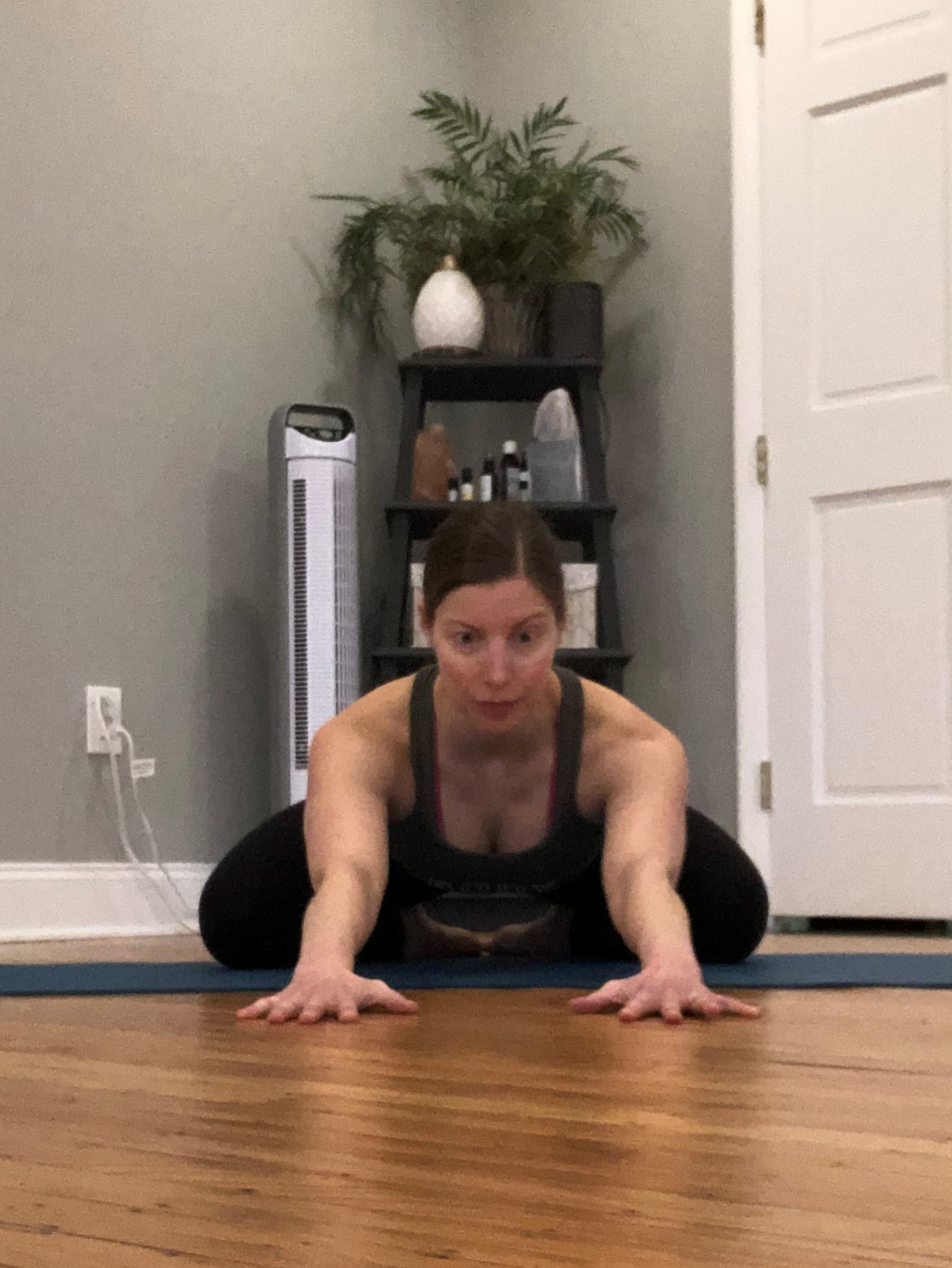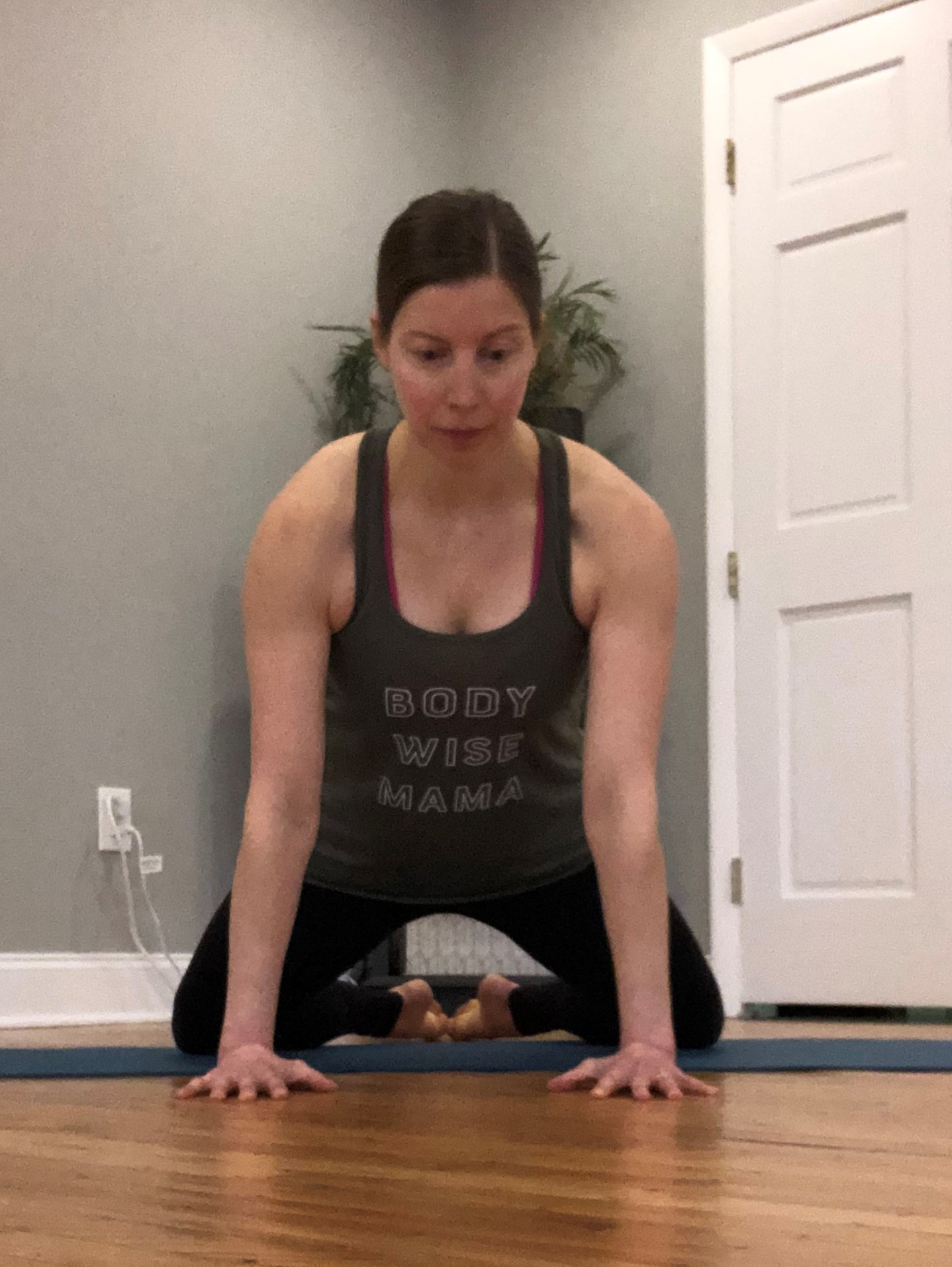Active birth is the embodiment of trusting and allowing Mother Nature to lead the way – moving through some or all of the stages of labor with positions, decisions and actions that follow the innate rhythms, urges and signals of your body.
It entails physical activity like ambulatory labor (i.e. free to walk/move around) and upright childbirth (e.g. squatting, kneeling, hands + knees, etc.). It means responding to the sensations of labor with rhythmic breathing and movements that help you feel confident, comforted, strong, resilient and empowered. Active birth is achieved by using your chosen sources of physical, psychological, emotional and spiritual support at will and based on what feels the most natural for you – moment by moment, contraction by contraction. It doesn’t necessarily mean medicine- or intervention-free. The principles of active birth are rooted in our ancient human origins but have evolved with modern medicine. You can implement them in any setting and under the care of any type of practitioner – from hospital to home; from midwife to obstetrician.
All of the BodyWiseMama prenatal workouts for labor, birth and postpartum recovery align so perfectly with these principles, which inspired me to share what I’ve learned about active birth and how to put it into action. Over the years, I’ve developed a prenatal strength training method in response to what my clients and students have reported being helpful and useful during “real life labor.” I’ve historically relied on their anecdotal evidence to hone that method. Now, I’ve gone on to do more research on evidence-based practices in preparing the body and mind for the most natural birth experience possible. Surprisingly, what I have learned has only reinforced or articulated what I’d already been teaching (and, at times, preaching!).

Here’s what I’ve curated through my research as the essentials of a prenatal workout program to prepare for active labor, birth and postpartum recovery:
-
- Grounding + Centering
- Rhythmic Breathing in Response to Intense Sensation
- Muscle Strengthening + Lengthening (i.e. eccentric or slow, steady + controlled)
- Increasing Endurance through High Volume Total Body Workouts (i.e. lots of reps or time under tension)
- Try a Variety of Positions throughout the Workout
- Using Good Pain to Increase Presence (i.e. muscle burn and soreness)
- Increasing the Mind-to-Muscle Connection (i.e. visualizing or focusing intently on the “push muscles”)
- Invigorating Exercise → Endorphin Release → Relaxation + Pain Relief
- Using Physical Challenges to build Confidence, Empowerment + Resilience
With this post and the following training program, I’m advocating for you to embrace your right to envision and plan for your most authentic and athletic birth experience possible versus pushing an agenda of righteous activism here. Let me rephrase to be even more direct about what I believe: how your baby is born – vaginally, C-section, induced, with or without various forms of pain relief, etc. – is never as important as your agency/free will to choose, agree to and feel in charge of how your baby is born.

This strength training workout is based on evidence-based recommendations for getting your body, mind and spirit ready for the most active childbirth as possible (including all the support people and things of your choosing at your disposal). You can do all of these prenatal exercises at any stage of pregnancy and at any fitness level. Practice some different rhythmic breathing patterns (e.g. relax on the inhale and push on the exhale, short inhales/long inhales when holding positions, etc.). And enjoy the embodiment of being your own guide and listening to your innate wisdom, goddess!
RECOMMENDED EQUIPMENT: An assortment of resistance bands or dumbbells ranging from light to moderate weight, mat, blanket or towel to cushion knees, 2 yoga blocks to bolster you in any position that feels straining on your joints or ligaments.
OPTION 1: Complete 2-4 rounds of the circuit. Take your time on transitions between exercises but try to keep the momentum up until you complete the entire circuit. Take a full minute off in between each round to stretch, breathe or simply rest.
OPTION 2: Give yourself 45-60 minutes to complete as many rounds as possible, adding 2 reps to each exercise each round (i.e. 12, 14, 16, etc.). Take 15-30 seconds to rest and transition between each exercise. Take 1-2 minutes of rest, stretching or deep breathing when you complete each round.
Split Stance Triceps Kickbacks (right arm then left) x 10 (switch legs halfway)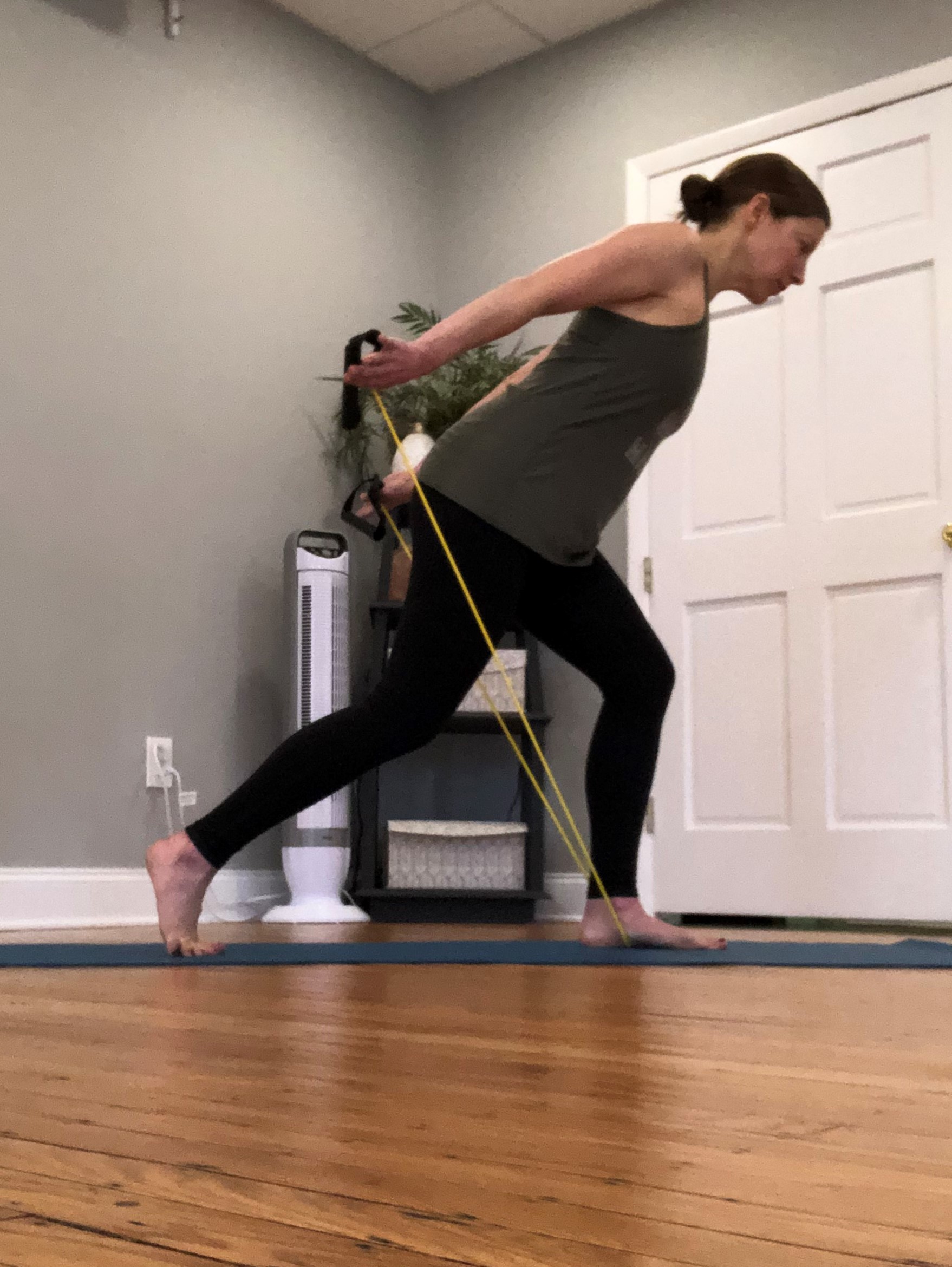
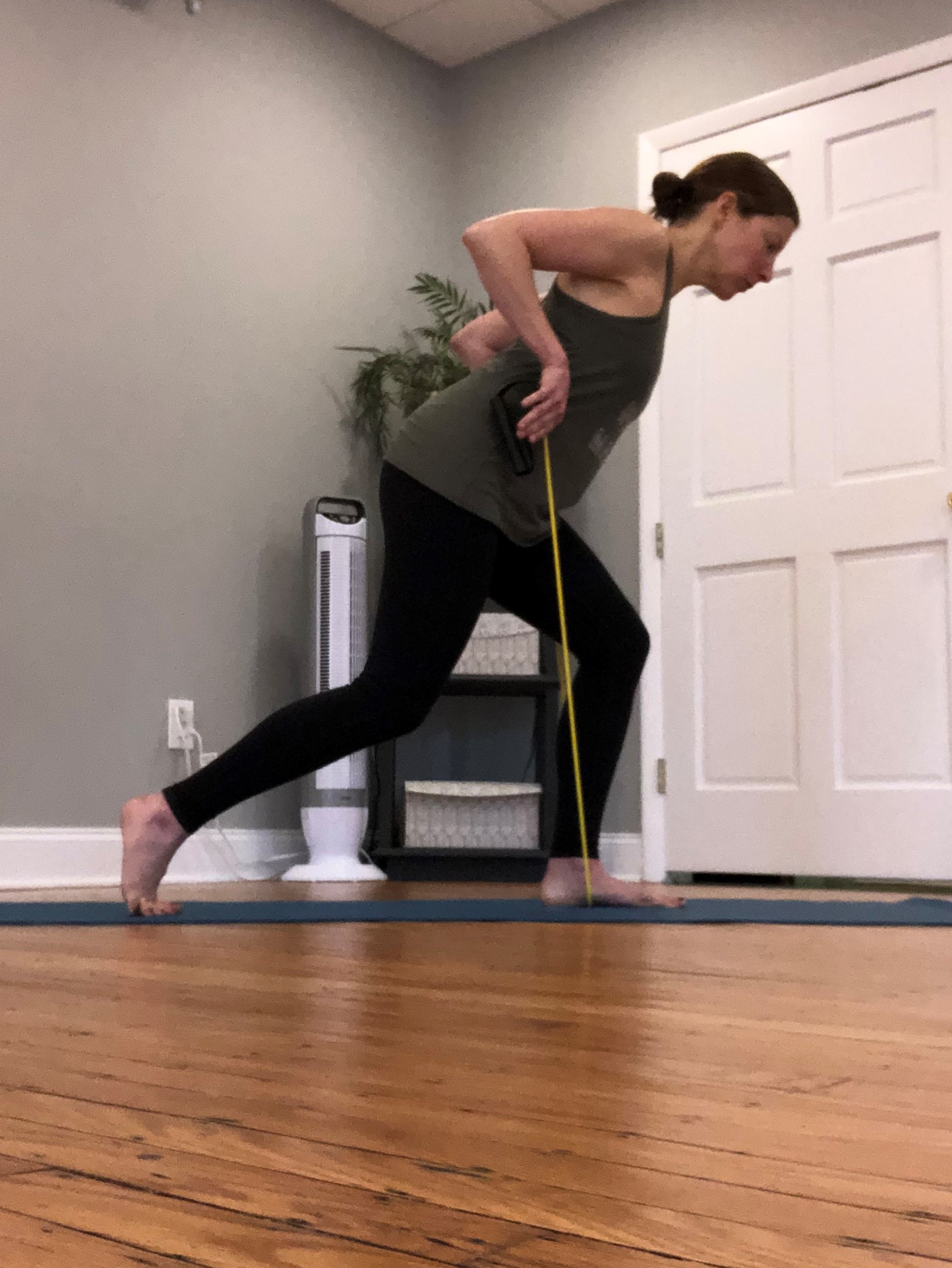
Bird Dog Tap + Lift x 10 each side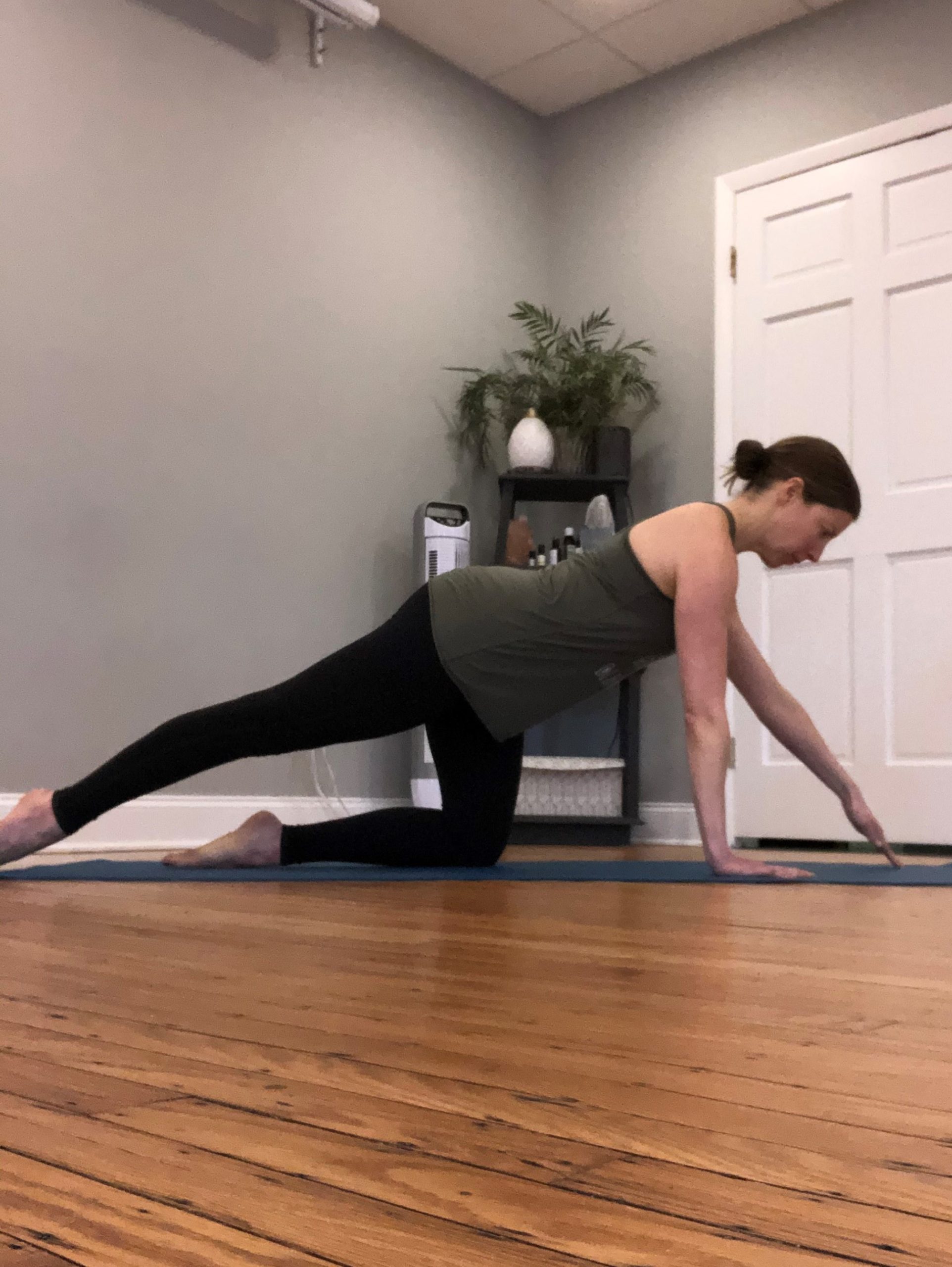

Forearm Hydrants x 10 each leg (Option: Forearm Knee Lifts x 10)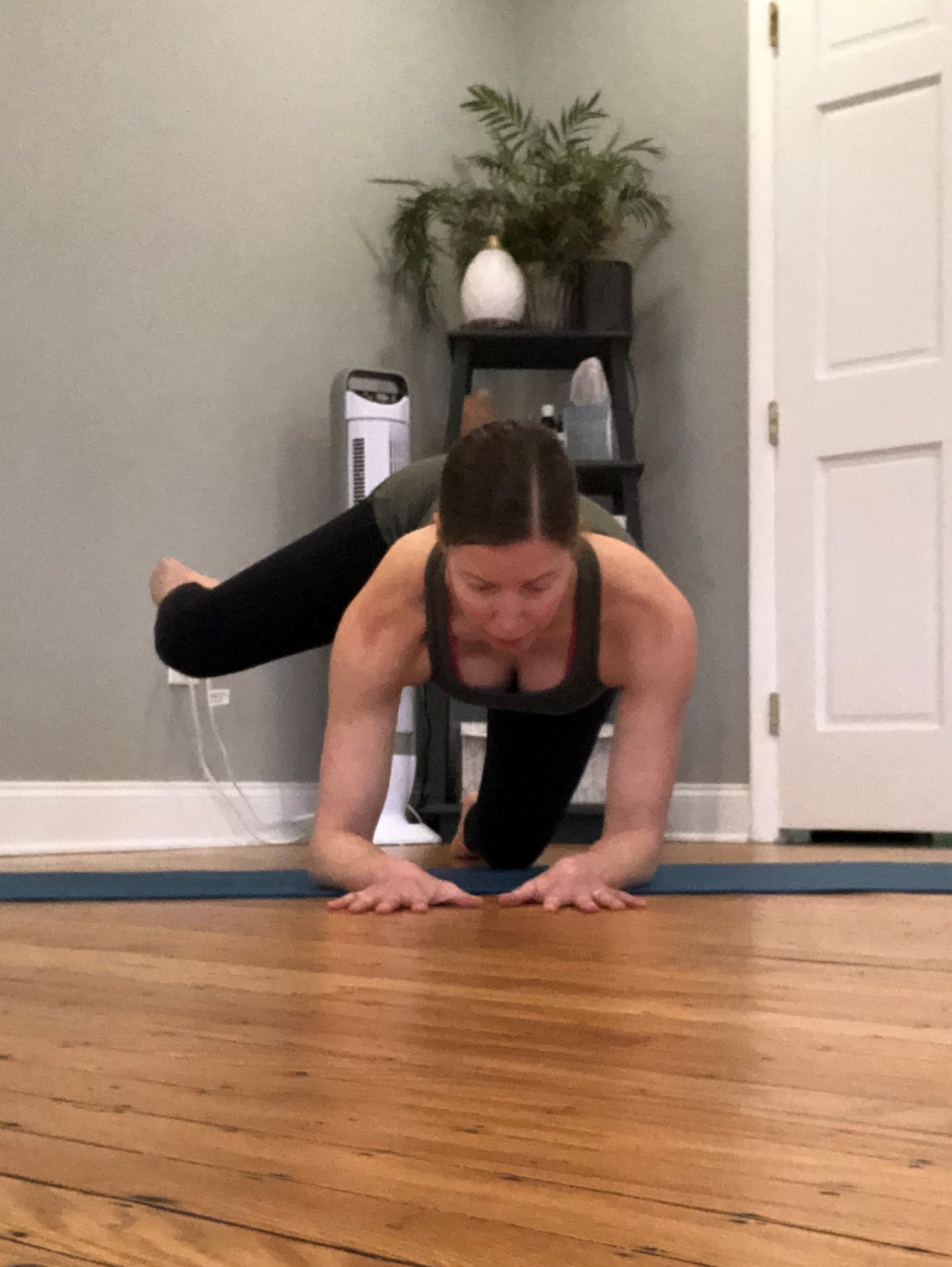

Kneeling Lunge + Reverse Flies x 10 (5 each leg) (use an open hip position in late pregnancy)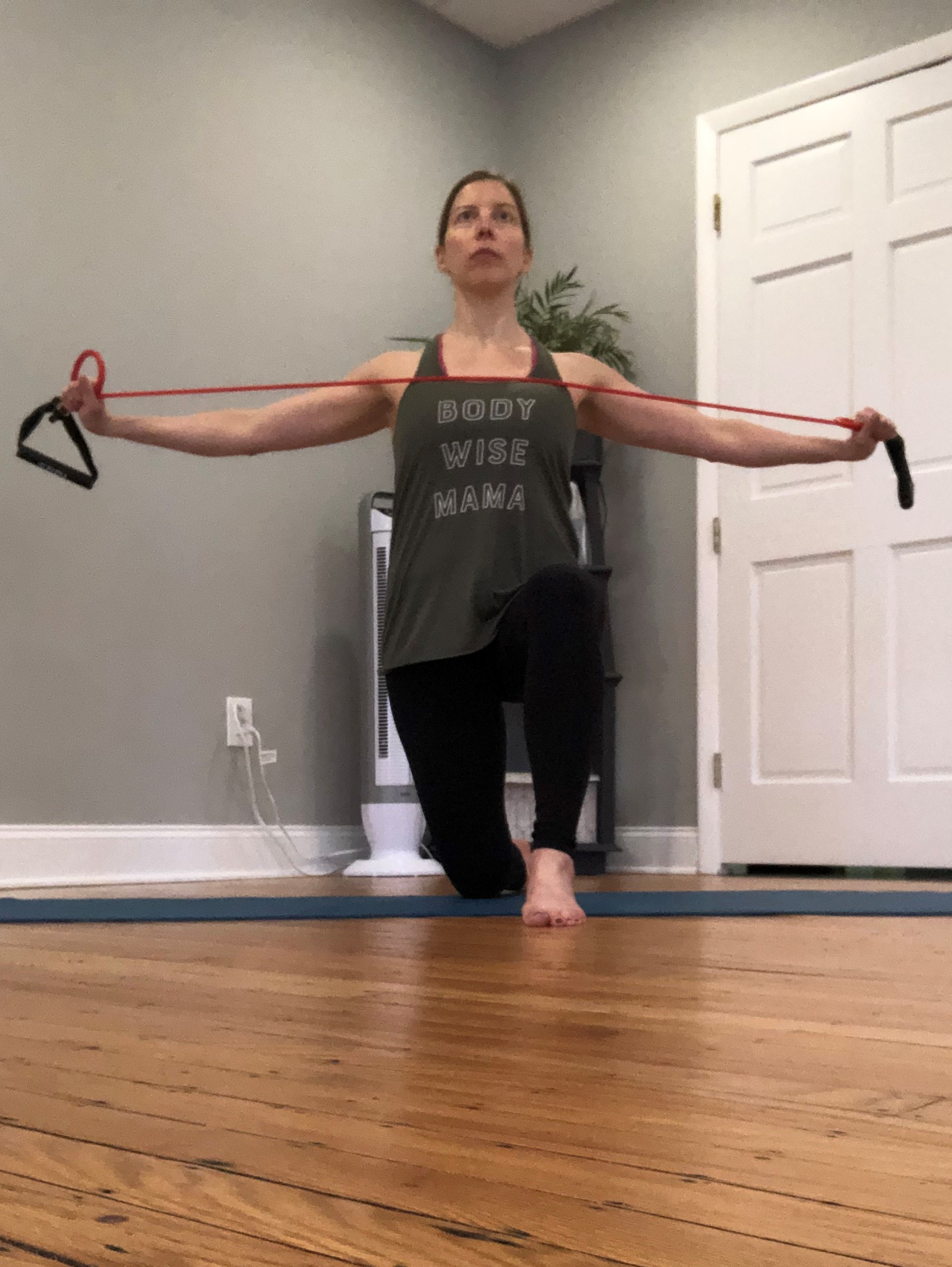
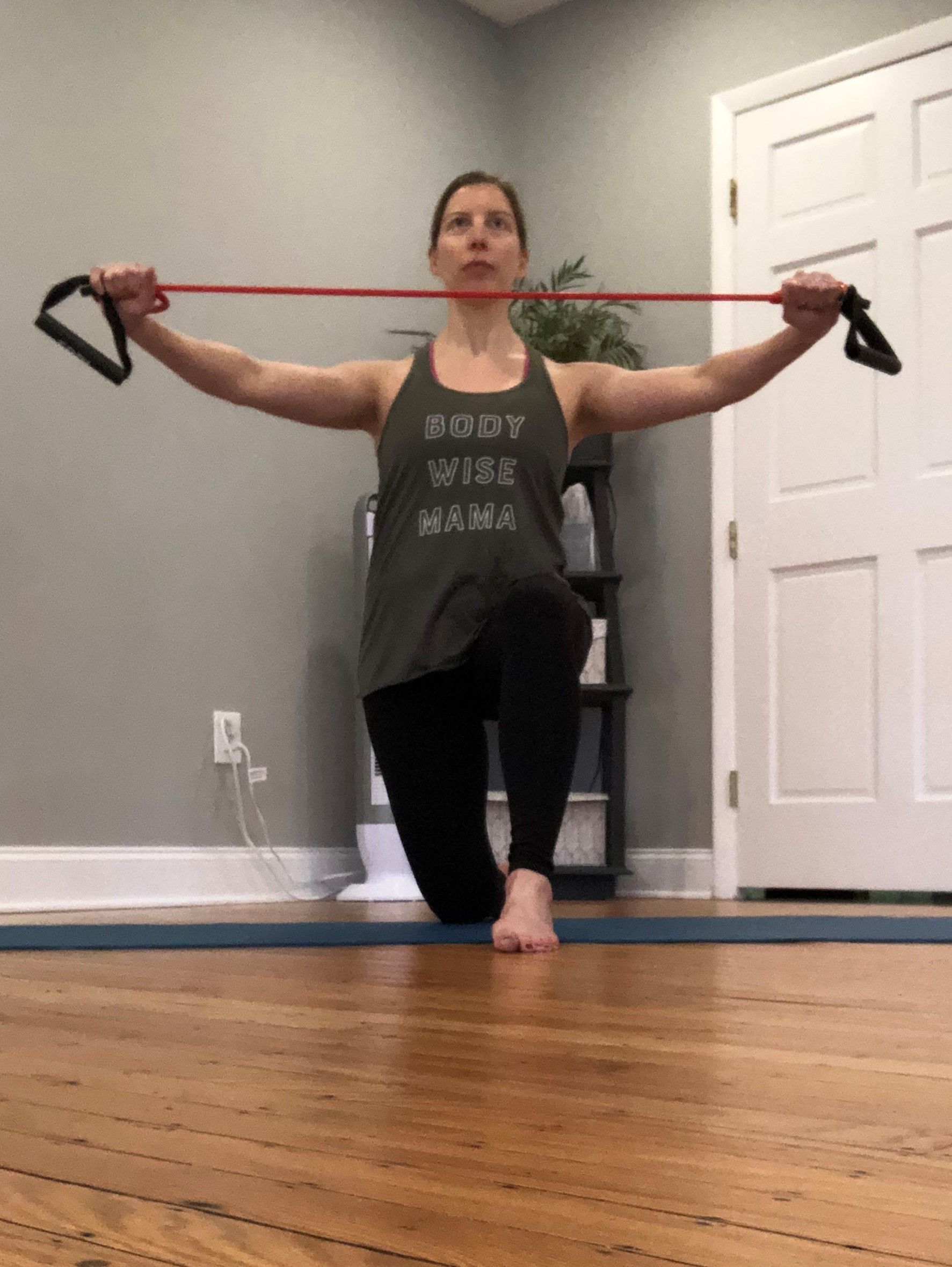

Lunge Hold + Underhanded Lateral Raise x 10 total (5 each leg)
